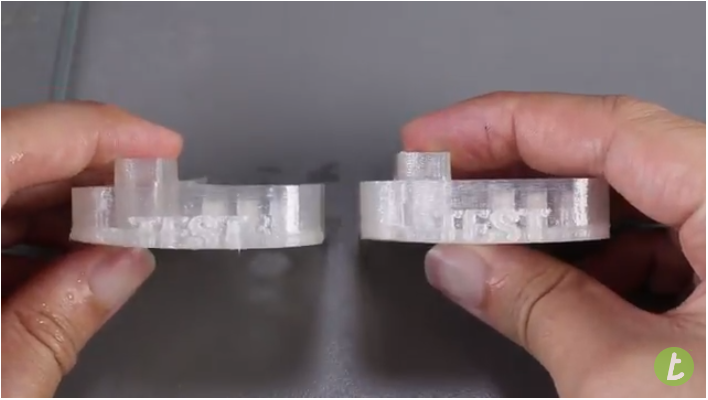Once you’ve bought a 3D printer, there are challenges that lay ahead. One of those challenges is finding a good bed adhesive to make sure that your print’s first layer sticks to the print bed securely yet can be easily removed once the print job is finished. Many people use simple glue sticks, and others use Kapton tape. But there’s always room for a little creativity, as 3D printer company Tinkerine showed in a recent YouTube video.
 Tinkerine, based in British Columbia, is the maker of the Ditto 3D printer line and a champion of 3D printing education, as evidenced by its Tinkerine U educational resources. It’s also a company that is fascinated by 3D printing experimentation, and its YouTube channel is full of its series Tinkerine Experiments, in which the team tries out unconventional methods of post-processing and more. Some of its experiments have included smoothing PLA with a soldering iron, citric acid, or Coca-Cola, or post-processing them with a rock tumbler. In the latest Tinkerine Experiment, the company tried creating a print bed adhesive with sugar water.
Tinkerine, based in British Columbia, is the maker of the Ditto 3D printer line and a champion of 3D printing education, as evidenced by its Tinkerine U educational resources. It’s also a company that is fascinated by 3D printing experimentation, and its YouTube channel is full of its series Tinkerine Experiments, in which the team tries out unconventional methods of post-processing and more. Some of its experiments have included smoothing PLA with a soldering iron, citric acid, or Coca-Cola, or post-processing them with a rock tumbler. In the latest Tinkerine Experiment, the company tried creating a print bed adhesive with sugar water.
No complicated formulations went into creating the sugar water; the video’s host simply dumped some sugar into some water and hoped for the best. He wondered if there may be a bit too much water in the mix, but it didn’t seem to matter in the long run. He spread the sugar water mixture on the print bed and sped the drying process along a bit with a hair dryer, then tried a first test print.
It worked extremely well. The first print stuck easily to the print bed, and was removed easily once the print was finished. The second and third prints showed a bit of lift in one corner; the host theorized that the sugar water may not have spread evenly to that part of the print bed. Other than that corner, however, the second and third prints adhered just as well as the first.
The prints required a bit of cleaning to remove the sticky sugar water residue, but no more than would be necessary with a glue stick or other form of adhesion. Overall, using sugar water was a clever and inexpensive way to get prints to stick to the print bed, an alternative to the usual methods.
The experiment was suggested by YouTube user Aleksander Alekseev, who pointed out that a bigger challenge might be to try printing with ABS using the sugar water solution (the original experiment used PLA). He also suggested using a brush to spread the sugar water more evenly, while the bed was heating so it dried more quickly.
If you have a suggestion for an experiment to try, you can contact Tinkerine by commenting on their YouTube channel or through their website.
Discuss this and other 3D printing topics at 3DPrintBoard.com or share your thoughts below.
Subscribe to Our Email Newsletter
Stay up-to-date on all the latest news from the 3D printing industry and receive information and offers from third party vendors.
You May Also Like
Gorilla Sports GE’s First 3D Printed Titanium Cast
How do you help a gorilla with a broken arm? Sounds like the start of a bad joke a zookeeper might tell, but it’s an actual dilemma recently faced by...
Nylon 3D Printed Parts Made More Functional with Coatings & Colors
Parts 3D printed from polyamide (PA, Nylon) 12 using powder bed fusion (PBF) are a mainstay in the additive manufacturing (AM) industry. While post-finishing processes have improved the porosity of...
$25M to Back Sintavia’s Largest Expansion of Metal 3D Printing Capacity Since 2019
Sintavia, the digital manufacturing company specializing in mission-critical parts for strategic sectors, announced a $25 million investment to increase its production capacity, the largest expansion to its operations since 2019....
Velo3D Initiates Public Offering in a Bid to Strengthen Financial Foundations and Drive Future Growth
Velo3D (NYSE: VLD) has been among a number of publicly traded 3D printing firms that have attempted to weather the current macroeconomic climate. After posting a challenging financial report for 2023,...

































